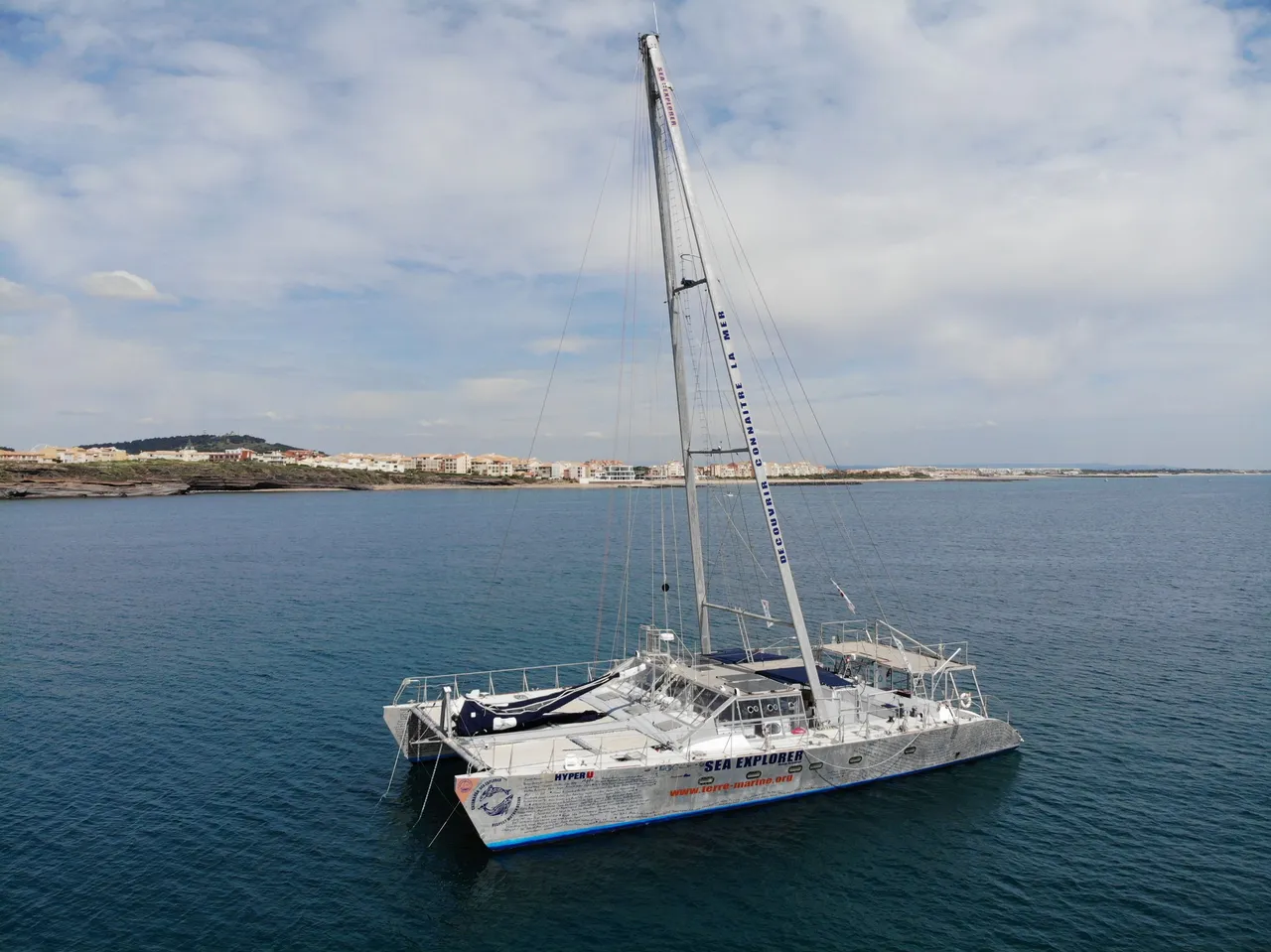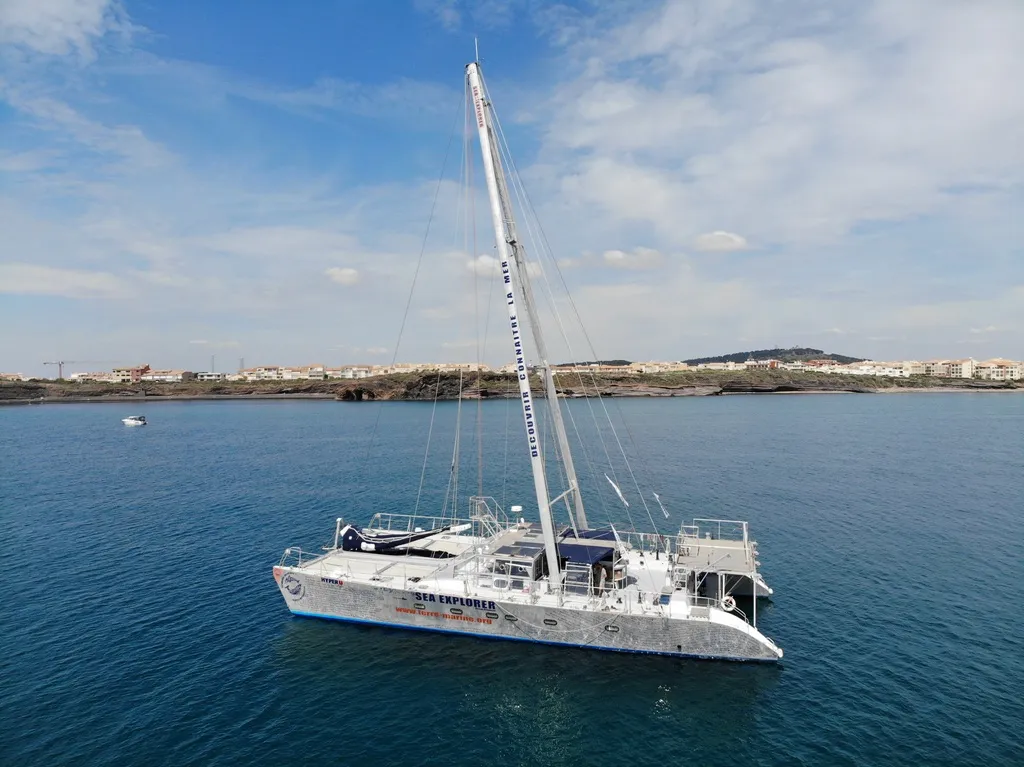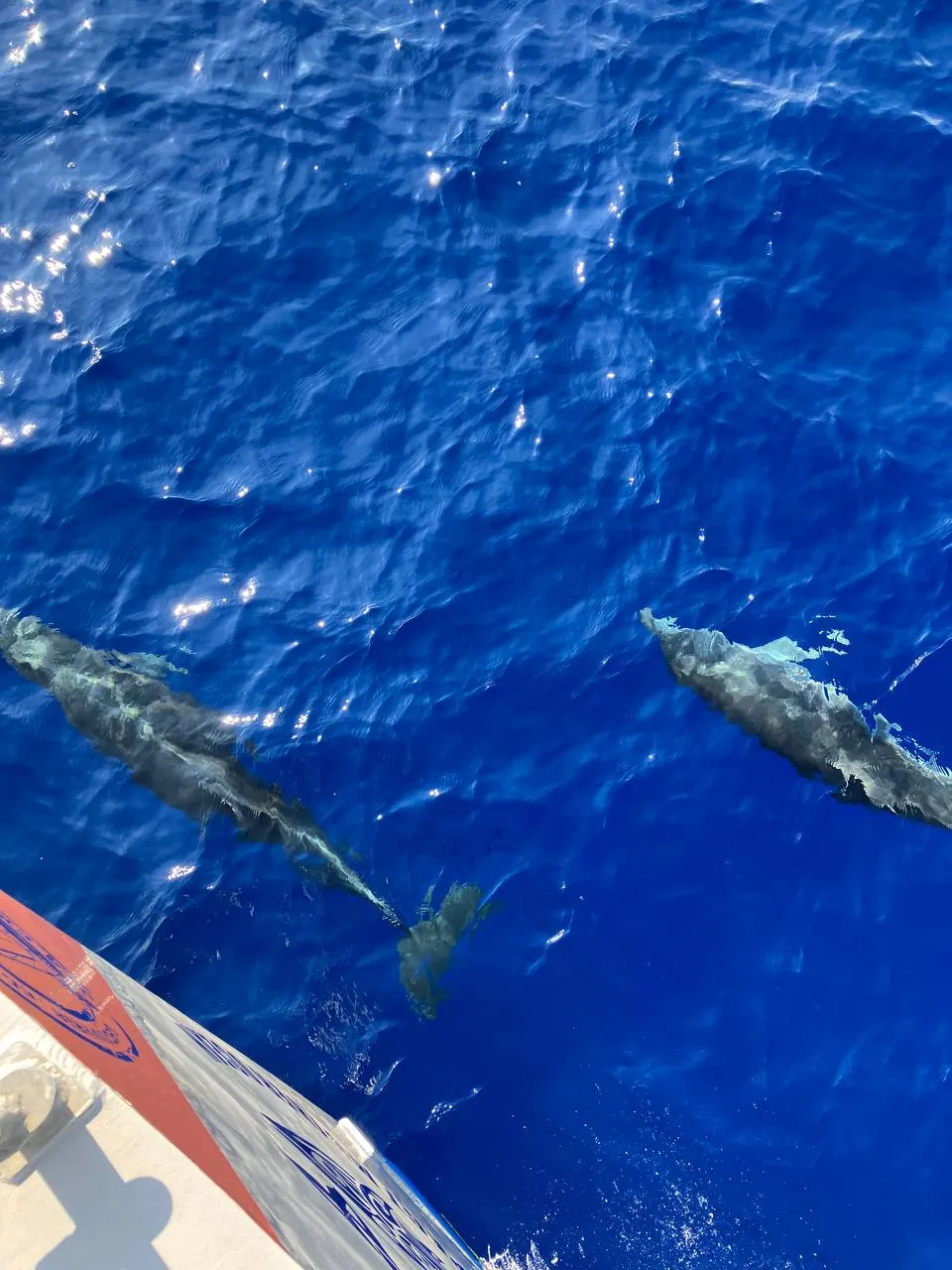Hi, I'm Sea Explorer, an aluminium explorer class catamaran with a fascinating history and bright future.

I was born in France, at the Lerin Islands, just off the famous Cannes in the French Riviera - one of the world's yachting meccas and finished my construction in Cap D'Agde a few hundred miles west.
I'm 23.99m (almost 79') long and 11.76m (37' wide). That's slightly larger than a full tennis court.
But although I'm big, I have shallow draft of only 1.3m and am very light for my size (27 ton displacement).
I don't have any keels and my hull is designed to be able to be beached. I'm basically a huge Hobbie Cat.
I've got lots of solar panels (3.5kW) and soon will have a lot more, as I'm destined to be powered almost fully by just the sun and wind.
A Frame Mast
You will immediately notice my innovative A frame mast.

My first owner and part builder, sailing professor Michel Frank conceived of this design with naval architect Nicolas Fauroux and structural designer Rivoyre Ingénierie.
Typical sailing yachts with a single hull (monohulls) have a mast that is connected through the boat to the heavy, deep keel and the mast/keel combination is both the point of balance and pivot and a major structural element of the yacht.
Catamarans are different. They have two hulls which are connected above the water by beams and lightweight floor elements including trampolines. The major structural elements are the hulls and connecting beams.
Yet when designing masts for catamarans the vast majority of builders use a single central mast, like a monohull, which necessitates substantial structural reinforcement to connect the mast securely to the hulls and puts the large forces generated by the sail into parts of the boat that are not inherently strong.
Sailing is a conservative field and people stuck with what they and the market knew - a single central mast.
Michel, with his vast sailing experience had a better idea. Why not use an A Frame so that the mast connected directly to the crucial strong points of the boat, the hulls. This would allow the boat to remain light and strong. It also allowed a proper ladder and crows nest lookout points for spotting dolphins and whales.

Upcycled parts
Although my main structural elements (hull, cross beams and floor) were built by high-end French yacht builder, my fit out was done using many recycled and reused parts and tens of thousands of hours of volunteer labour.
I'll write more about this in a later post, but one particularly interesting set of recycled parts are the double handed grinder winches, from famous Italian manufacturer Barbarossa, now owned by Harken. Apparently an Italian museum of industrial design wanted these winches for their museum, and offered "any price" but Michel wanted to keep them for me. They are my main winches and get lots of use, for sail lines, halyards, lifting the tender on davits and even hauling anchor (a story for another post).

A journey the length of the Mediterranean
I've just sailed from Cap D'Agde almost the full length of the Mediterranean, along the French and Italian coasts, through the Straits of Messina, across the Ionian Sea to Greece and then through the newly re-opened Corinth Canal to the Aegean, island hopping through the Aegean and then a long sail to Cyprus, my new home.
This journey will be the subject of additional Hive posts and some 3Speak videos.
Upgrade to Solar Electric Propulsion
My design features of highly efficient, narrow low drag hulls, light weight and a very large footprint makes me perfect for upgrading to solar powered electric motors backed by advanced lithium batteries.
While an electric car has far too small a surface area for solar panels to provide useful energy for propulsion, a large catamaran is a different story.
Solar panels today are cheap (less per square meter than most flooring, roofing and wall materials) and recycled lithium batteries from crashed electric cars widely available and far cheaper than a few years ago.
The power requirements for ships are quite low at low speeds and rise exponentially so that solar panels could completely power me at typical sailing speeds of 5-7 knots, with batteries assisting where necessary.
I already carry the lithium batteries (54 kWh), battery management systems, 4 x 10kW electric motors and solar charge controllers to upgrade me with 25kW of solar panels, soon to be ordered.
This upgrade will be the subject of a series of detailed Hive posts.
The system has already been partly tested with my "house" electrical system having been upgraded to lithium batteries and 3.5kW of solar panels prior to and during my cross-Med journey.
I hope you will follow me and my travels and upgrades on Hive and 3Speak.
When my livery gets upgraded I will be advertising Hive to the many people who are interested in seeing me and hearing my story.
I would like to join you all at Hive Fest but Amsterdam's canals are too narrow for me!
Maybe next year Hive Fest can be in Cyprus or Turkey so I can come.
